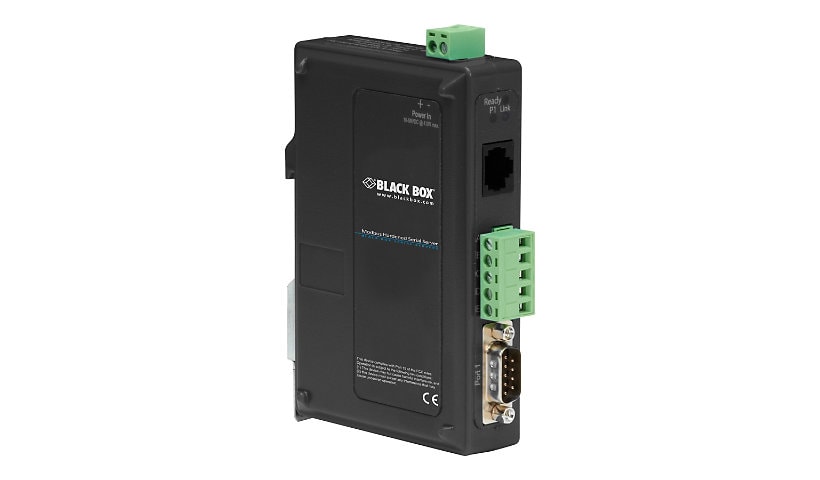
Know your gear
Easily integrate an older serial Modbus device into your Ethernet Modbus network. This rugged serial server gives you a simple way to migrate to an Ethernet-based industrial control system - without having to replace the older Modbus equipment you've already invested in.
Translating older and newer protocols, the 1-port Modbus Hardened Serial Server converts mismatched serial baud rates and settings, enabling the serial Modbus device to become a node on your Ethernet network. Older PLCs can then talk to newer sensors, meters, scales, and other industrial monitoring and automation instruments.
Configuration can be done through a direct serial connection or via the network, so you can improve productivity and cut down on the amount of time required to troubleshoot a serial device on a factory floor or in a remote location. Configure devices, upgrade firmware, and more - all this from the comfort of your office.
A simple-to-install, user-friendly software application enables programming. No time-consuming setup is required. The software also features Modbus messaging priority control and allows management through multiple TCP/IP client sessions. The serial server can be configured for TCP client or server operation.
A built-in traffic monitor provides instant verification of a successful installation, and you can view the serial server's operational status in real time.
The 1-port Modbus Hardened Serial Server has a standard DB9 serial port for RS-232 device connections and a removable terminal block for an RS-422 or RS-485 device connection. It also has an autodetecting 10Base-T/100BASE-TX port for the Ethernet network connection.
Either device on either side can be a Modbus master or slave, customizable to your application. A serial master can be configured to control an IP slave, for instance. Also, a serial slave device can be accessed over a LAN or WAN by up to 16 simultaneous Modbus TCP masters.
Translating older and newer protocols, the 1-port Modbus Hardened Serial Server converts mismatched serial baud rates and settings, enabling the serial Modbus device to become a node on your Ethernet network. Older PLCs can then talk to newer sensors, meters, scales, and other industrial monitoring and automation instruments.
Configuration can be done through a direct serial connection or via the network, so you can improve productivity and cut down on the amount of time required to troubleshoot a serial device on a factory floor or in a remote location. Configure devices, upgrade firmware, and more - all this from the comfort of your office.
A simple-to-install, user-friendly software application enables programming. No time-consuming setup is required. The software also features Modbus messaging priority control and allows management through multiple TCP/IP client sessions. The serial server can be configured for TCP client or server operation.
A built-in traffic monitor provides instant verification of a successful installation, and you can view the serial server's operational status in real time.
The 1-port Modbus Hardened Serial Server has a standard DB9 serial port for RS-232 device connections and a removable terminal block for an RS-422 or RS-485 device connection. It also has an autodetecting 10Base-T/100BASE-TX port for the Ethernet network connection.
Either device on either side can be a Modbus master or slave, customizable to your application. A serial master can be configured to control an IP slave, for instance. Also, a serial slave device can be accessed over a LAN or WAN by up to 16 simultaneous Modbus TCP masters.
Add to Compare
